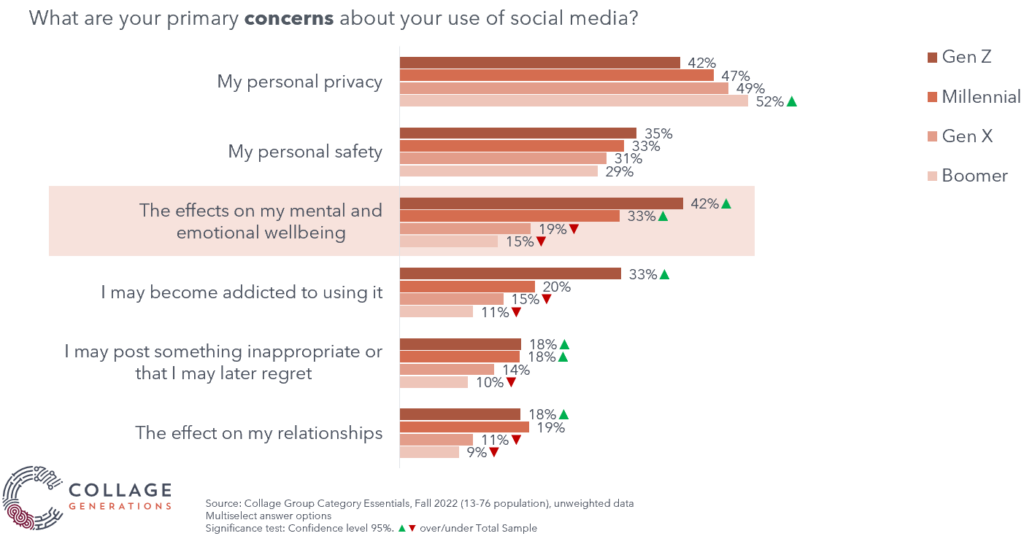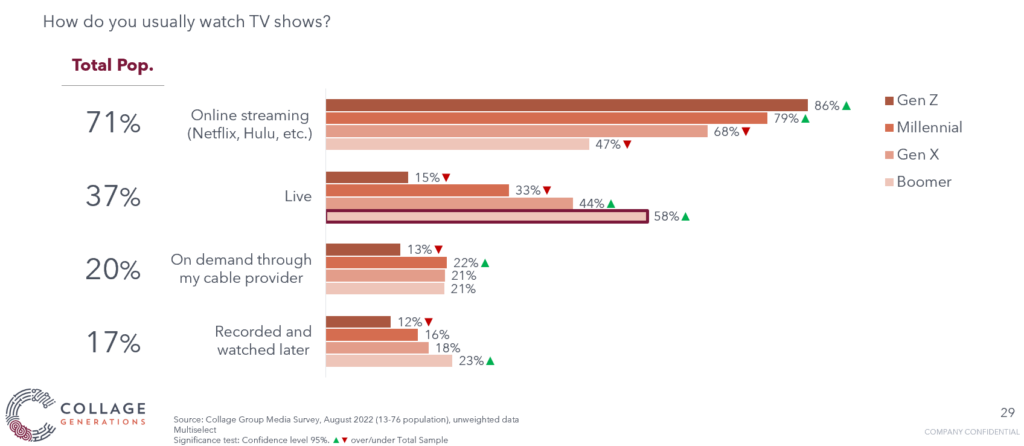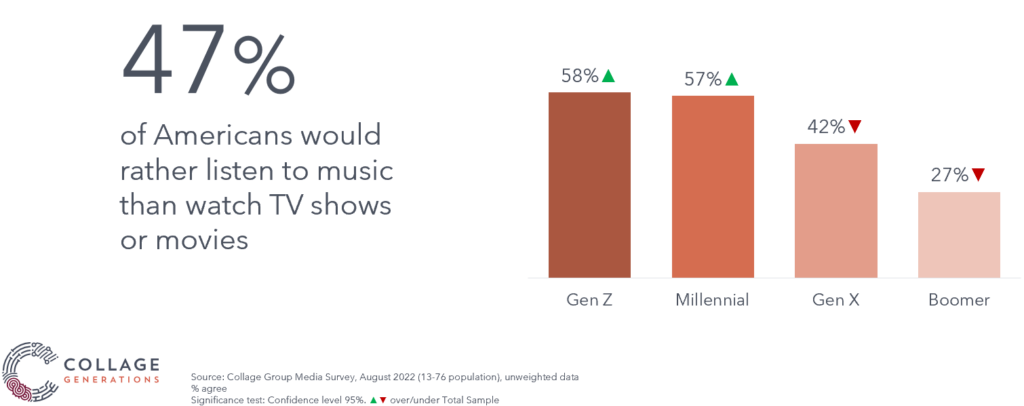Understand and Embrace Generational Consumer Media Habits and Channels

Learn how Americans across generations engage with media, including social media, movies, TV shows, music, reading, and podcasts.
Media is a major aspect of consumers’ everyday lives. Americans spend a significant amount of their time and attention consuming social media, visual entertainment, and audio streaming content. For brands and advertisers across industries to succeed, they need to understand where people are going to consume media content, and why they’re going there.
Fill out the form for an excerpt from our Generational Consumer Media Habits & Channels presentation.
Collage Group’s 2022 Media Habits and Channels Study provides insights across generations on the specific platforms American media users go to, their media habits, and their preferences for media content. The data dives deep into content and platform drivers—spanning categories, passion points, and identity attributes.
Key Findings: Social Media
- All Generations, with the exception of Boomers, use a wide variety of platforms, and they tend to be always ‘on’.
- This high social media use comes at a cost, Gen Z worries most about the impact on their mental and emotional wellbeing and becoming addicted. All generations have concerns for their privacy and safety.
- Social media functions as a portal to other media, especially for younger generations.

Context:
Social media is both friend and foe for consumers today. It is a powerful enabler of connection across generations – on the younger end, it provides ways to find community and make new friends, and on the older end it’s a powerful way to reconnect.
But there are downsides too – younger generations feel the pressure of constant comparison that social media forces upon them, and consumers of all generations worry about safety and security.
Action Steps:
- Provide ways to mediate the mental and emotional effects of being online.
- Facilitate meaningful connection by encouraging authentic self-expression.
- Utilize the power of social media as a discovery engine for other types of media – like new music and shows to watch.
Key Findings: TV & Movies
- Most generations watch TV shows via online streaming platforms, but for Boomers, watching live TV is still most common.
- Generations also vary when it comes to what they watch – younger generations show a preference for comedy, whereas older generations show a preference for tv news and action/adventure movies.

Context:
The proliferation of mobile devices has driven demand for streaming platform subscriptions among younger consumers. The accessibility of smart phones, tablets, and laptops offers younger generations the opportunity to stream content on the go.
Further, younger generations’ changing tastes align better with what streaming platforms offer, compared to Boomers who still highly favor news and sports, which are better suited to live TV.
Action Steps:
- Maintain advertising presence across TV formats, but understand that while Boomers may be watching TV more, their viewing is more passive.
- Meanwhile younger generations are watching more via streaming platforms, but may have shorter attention spans for ads
Key Findings: Music
- Music is a top passion point for younger consumers. The majority of Gen Z and Millennials would rather listen to music than watch TV.
- Music is popular across generations for its ability to provide comfort and diversion while multitasking. Across Generations, consumers embrace the human element of music – and enjoy creating playlists themselves and sharing musical tastes with others.

Context:
Music is a powerful comfort – and a powerful connector – across generations, but this is particularly true for Gen Z, a generation that craves human connection and relief from stress and anxiety.
Younger generations are passionate music fans overall, but while Gen Z tends to consume music more passively, their Millennial counterparts are more active in their passions – and like to go out to shows or live music venues.
Action Steps:
- Embrace the human element when selecting and promoting music – from showcasing artists stories to background on lyrics
- Lean into options for music to be both passive and active, depending on consumer needs. For example, create task specific playlists to help consumers as they multitask, or interactive playlists for when music is the main focus.
This blog includes a small sample of the deep cultural intelligence available to our members. Contact us to learn how you can unlock full access to our cultural intelligence engine.